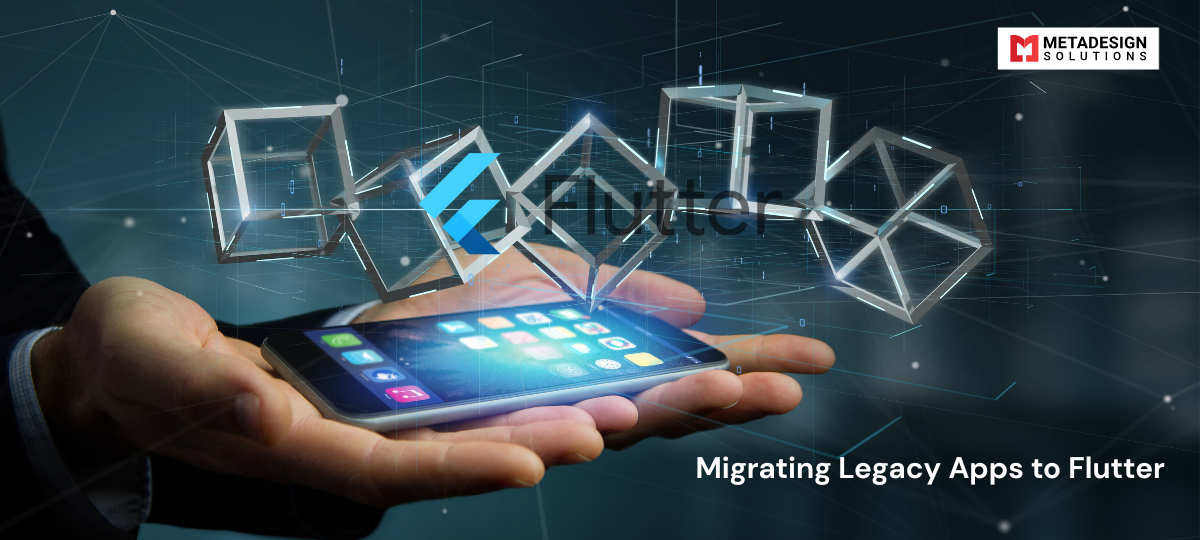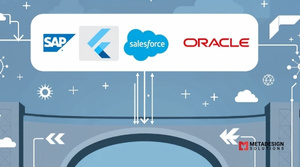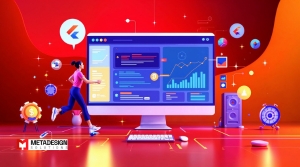Migrating an existing application to Flutter can breathe new life into your product, offering improved performance, a modern UI, and cross-platform support. However, migration requires careful planning and execution to ensure a seamless transition.
At MetaDesign Solutions, we’ve successfully migrated numerous legacy apps to Flutter. In this blog, I’ll share insights on how to approach migration, the benefits it brings, and the importance of considering Localization and Internationalization in Flutter Apps during the migration process.
Why Migrate to Flutter?
- Cross-Platform Development: Single codebase for iOS, Android, web, and desktop.
- High Performance: Fast rendering and smooth animations.
- Modern UI/UX: Leverage Flutter’s rich widget library for attractive interfaces.
- Cost Efficiency: Reduced development and maintenance costs.
Steps for Migrating to Flutter
1. Assess the Existing Application
- Analyze Features: List all functionalities and prioritize them.
- Identify Dependencies: Note any third-party libraries or APIs used.
- Evaluate Data Models: Understand the data structures and storage mechanisms.
2. Plan the Migration Strategy
- Incremental Migration: Gradually replace parts of the app.
- Full Rewrite: Rebuild the app entirely in Flutter.
Considerations:
- Time Constraints: Deadlines may influence the approach.
- Resource Availability: Team expertise and capacity.
3. Set Up the Flutter Project
Create a New Flutter Project:
bash code:
flutter create my_new_app
Planning to Move Your Legacy App to Flutter?
Book a session to create a seamless, future-proof migration roadmap.
- Configure Project Settings: Set up package names, bundle identifiers, and dependencies.
4. Recreate UI Components
- Design Conversion: Translate existing UI designs into Flutter widgets.
- Custom Widgets: Develop custom components to match legacy UI if necessary.
Tip: Use Flutter Inspector to visualize widget hierarchies and debug UI issues.
5. Implement Business Logic
- Reuse Logic: If the legacy app is written in Dart (e.g., AngularDart), you may reuse some code.
- Translate Code: Convert logic from other languages (Java, Swift) into Dart.
6. Integrate Backend Services
- APIs: Connect to existing backend APIs.
- Data Handling: Implement models and data parsing.
Example:
dart code:
const platform = MethodChannel('com.example/app');
Future<void> callNativeMethod() async {
try {
final result = await platform.invokeMethod('nativeMethod');
} on PlatformException catch (e) {
print("Failed to invoke: '${e.message}'.");
}
}
7. Implement State Management
- Choose a State Management Solution: Provider, Bloc, Riverpod, etc.
- Organize State: Ensure consistent state across the app.
8. Testing
- Automated Tests: Write unit, widget, and integration tests.
- User Acceptance Testing: Gather feedback from stakeholders.
9. Deployment
- App Store Submission: Prepare app assets and metadata.
- Continuous Integration: Set up CI/CD pipelines for ongoing development.
Challenges and Solutions
Compatibility Issues
- Challenge: Integrating with platform-specific features.
- Solution: Use platform channels to communicate with native code.
Example:
dart code:
const platform = MethodChannel('com.example/app');
Future<void> callNativeMethod() async {
try {
final result = await platform.invokeMethod('nativeMethod');
} on PlatformException catch (e) {
print("Failed to invoke: '${e.message}'.");
}
}
Data Migration
- Challenge: Migrating local data or databases.
- Solution: Implement data export/import or synchronization mechanisms.
User Interface Differences
- Challenge: Replicating complex UI elements.
- Solution: Leverage Flutter’s flexibility to recreate or enhance UI components.
Benefits of Migration
- Enhanced User Experience: Modern UI and smooth performance.
- Easier Maintenance: Unified codebase simplifies updates.
- Future-Proofing: Stay current with technology trends and platform updates.
Real-World Application at MetaDesign Solutions
We migrated a legacy e-commerce app from native code to Flutter.
Approach:
- Conducted a thorough analysis of the existing app.
- Prioritized features based on business needs.
- Rebuilt the app in Flutter with improved UI/UX.
- Implemented additional features during migration.
Outcome: The new app saw increased user engagement, faster load times, and reduced development costs for future updates.
How MetaDesign Solutions Can Help
Migrating to Flutter requires expertise to navigate challenges and maximize benefits.
Our Services:
- Feasibility Analysis: Assess the viability and benefits of migration.
- Migration Planning: Develop a strategic roadmap.
- Development: Rebuild your app with best practices.
- Testing and QA: Ensure the new app meets quality standards.
- Post-Migration Support: Ongoing maintenance and updates.
Why Choose Us:
- Experienced Team: Skilled in both legacy systems and Flutter.
- Comprehensive Approach: Handle all aspects of migration.
- Customer-Centric: Focus on delivering value aligned with your goals.
Get in Touch
Considering migrating your app to Flutter? Hire expert flutter app developers from MetaDesign Solutions.
Reach out to us at sales@metadesignsolutions.com to discuss your project.
Related Keyphrase:
#Flutter #AppMigration #LegacyApps #FlutterDevelopment #MobileAppDevelopment #CrossPlatformApps #TechInnovation #AppModernization #FlutterCommunity #MobileDevelopment #LegacyAppMigration #SoftwareDevelopment #FlutterFramework #MobileUI #TechForDevelopers #AppPerformance #Modernization #DartLang #MobileTech #ScalableApps #AppRedesign #CrossPlatformDevelopment #FlutterTools #UIUXDesign #AppUpgrade



